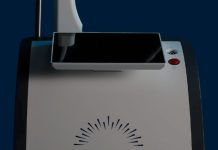Fractional microneedle radiofrequency (FMR) is safe and effective for improving enlarged facial pores, investigators reported in a study published in the Journal of Cosmetic Dermatology.
The retrospective study included clinical data of 75 patients with large facial pores who received FMR treatment from January 2019 to December 2020. Eligible participants had varying severity of large facial pores, received 1 or more sessions of FMR, and had complete clinical and follow-up data available. The treatment mode and parameters of FMR were adjusted according to each patient’s conditions.
A total of 75 patients (mean age, 29.0 [18.0-41.0] years; 69 women) with large facial pores were enrolled in the final data analysis. The mean disease course was 4.0 (1.0-20.0) years. Among the group, 45 patients received full-face FMR, 58 with nasal FMR, 45 with frontal FMR, and 72 with cheek FMR. The mean number of FMR treatment sessions in the overall analysis was 1.7, and 2 patients received 5 treatment sessions. Participants received the second session a median of 51.5 (21.0-350.0) days after the first session.
Before treatment, patients had a pore grade that was primarily 2 to 4, and 10 (13.3%) patients had a pore grade of 5 to 6, respectively. After treatment, 49 (65.3%) patients received the combination of recombinant bovine basic fibroblast growth factor (rb-bFGF) and EVE CHARM (Guangzhou Yuanquanyike Biological Technology Co, Ltd), and 25 (33.3%) only used rb-bFGF.
After the first treatment session, moderate to excellent improvement rates for the nose, forehead, and cheek were 13.8%, 8.9%, and 11.1%, respectively. After the second treatment session, moderate to excellent improvement rates for the nose, forehead, and cheek were 53.6%, 60.0%, and 57.1%, respectively. The effect was more significant with an increased number of treatment sessions.
Pore classification, pulse width, and needle length were related to the treatment efficacy, according to univariate analysis. Multivariate regression analysis demonstrated that long pulse width (300 ms) was correlated positively with the efficacy (odds ratio, 22.4; 95% CI, 2.0-250.4; P =.012), compared with short pulse width (100-200 ms).
All of the participants had redness, swelling, burning, and pain immediately after the FMR treatment.
Study limitations include the retrospective and single-center design, and some adverse reactions and efficacy were assessed with subjective indexes. In addition, the efficacy of FMR might vary with the operations by different doctors, and it is difficult to completely exclude the cofounding effect of rb-bFGF on the efficacy of FMR.
“This study confirms that FMR is safe and effective for the improvement of enlarged facial pores, and the efficacy is associated with the increased number of treatment sessions,” stated the researchers. “Long pulse width is associated with improved clinical symptoms in patients with enlarged nasal pores. However, further prospective studies with bigger sample size are still needed to verify the preliminary conclusions in this study.”
Disclosure: Shenzhen Peninsula Medical Co., Ltd. provided funding for the language polishing of the manuscript.
Reference
Ren K, Liu H, Li B, Zhou B. Fractional microneedle radiofrequency treatment for enlarged facial pores: a real‐world retrospective observational study on 75 patients. J Cosmet Dermatol. Published online August 29, 2022. doi:10.1111/jocd.15339






